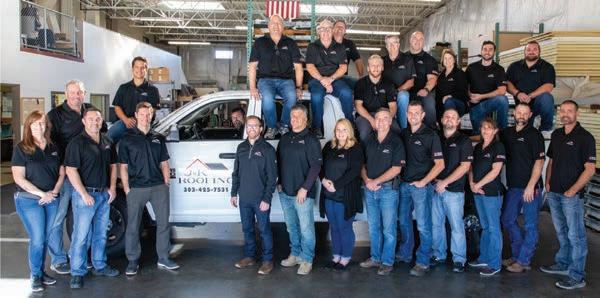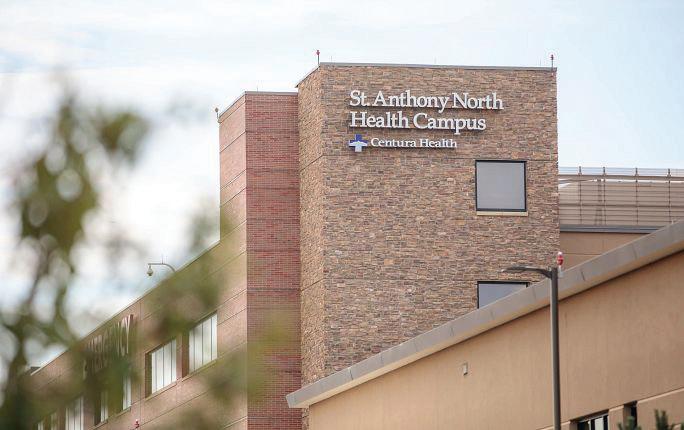
8 minute read
OPINION

How to heat building with sewage
No. It does not smell
BY MICHAEL BOOTH THE COLORADO SUN
As long as humans are around, there’s vast renewable energy to be had from the results of their daily living.
The National Western Center and Colorado State University’s growing Denver Spur campus are now heated every day by energy that experts in renewables were tired of seeing literally flushed down the drain. In a squeakyclean building in the shadow of Interstate 70, energy is pulled from one of Denver’s main sewage lines and transferred to clean water pipes shooting out to buildings on the National Western Center campus next door.
It’s the largest sewage heat recovery system in North America, online since April, and an offshoot of the 72-inch sewage main provides 90% of the energy needed to heat and cool local buildings. In winter, the 65- to 70-degree sewage heats water in the exchanger. In summer, the sewage flow cools the exchange water well below ambient air temperature on a 95-degree downtown day.
Sewage-loaded institutions from Canadian cities to Las Vegas hotels are studying the project for lessons as the budding renewable technology takes hold among carbon-conscious customers.
The attraction for CSU was clear, Spur campus Associate Vice Chancellor Jocelyn Hittle said, as the university builds up a complex researching everything from clean water sources, to veterinary medicine, to vertical horticulture.
“It’s in our ethos to think about sustainability, to think about the long term, and we know that a low-carbon option here was important,” Hittle said. Overall, the building energy costs are a few percent higher than simply connecting to the existing grid, Hittle said, but CSU “is going to be here for a long time. So the benefits accrue, when you think about sustainability and climate over that period.”
Making the sewage-to-heat system even more obvious was the fact it was basically an in-house project. Jim McQuarrie was the director of technology and innovation for Metro Water Recovery, the region’s largest sewer utility, when he pitched the idea to one of his former graduate school engineering advisers at CSU.
Metro Water Recovery wants to off-load heat from sewage before it gets to the treatment plants along the South Platte River, and is then discharged into the stream. Warmer water hurts fish and other wildlife.
Denver has billion-dollar redevelopment plans for the National Western site, traditional home to the January stock show and other events. The area’s sewer main was above ground on the site, which helped Metro Water Recovery lose heat but blocked ideal site development.
The planning coalition that developed around the idea agreed to put the big sewage pipes underground, and run an offshoot pipe to the new exchange building. The gleaming pipes throughout are labeled “sewer” or “ambient water.” Incoming sewage is first screened for large objects, then ground inside the pipes to a slurry that will maintain its flow.
As in all cities, wastewater temperatures are boosted by hot shower or kitchen drains over 100 degrees and dishwashers that hit 140 degrees.
In the exchange chamber, the sewage pipes flow next to clean water pipes, which are then pumped to circulate through CSU’s Spur buildings a block away, and the growing complex of National Western Center renovations. Heat pumps in each building add or subtract a few degrees from the piped clean water to create the right indoor temperatures. Then the clean water circles back to the exchange building for another run.
And the sewage keeps on coming. After leaving the exchange, the sewage flows back into the mains headed over to Metro Water Recovery, having lost energy but gained a purpose.
Every two hours, the sewage flow in the pipes is reversed to clean out silt and sand deposits, said Bryan Scott, chief operator on site for CenTrio, which financed, built and manages the exchange complex for Denver and National Western Center. The exchange equipment is built by SHARC, a British Columbia energy firm.
Developers in Boulder are working on a small system for an apartment complex, as is a slopeside condo at Snowmass Village, among others, CenTrio noted. The U.S. Department of Energy has estimated the energy from all the nation’s sewage could heat 30 million homes if recaptured.
“Anyone looking to utilize the free energy just going down the drain,” Scott said.
Besides getting a reliable and low-carbon form of energy, CSU wants its energy and engineering students to continue involvement in the project as part of their education, Hittle said.
“That’s another opportunity for us from a project of this scale,” Hittle said. “We’re learning as we go.”
This story is from The Colorado Sun, a journalist-owned news outlet based in Denver and covering the state. For more, and to support The Colorado Sun, visit coloradosun.com. The Colorado Sun is a partner in the Colorado News Conservancy, owner of Colorado Community Media.
BY LUKE ZARZECKI LZARZECKI@COLORADOCOMMUNITYMEDIA.COM
A $115 million expansion will be coming to St. Anthony North Hospital with plans to break ground on Dec. 16.
“In the area, it doesn’t matter what direction you look, everybody’s moving in,” said CEO Constance Schmidt, addressing rapid growth in the northern metro area of Denver.
Plans to expand the hospital started in 2017. By 2018, the hospital began to reach 80% capacity at midnight, meaning 80% of the beds had patients in them.
Admission numbers continued to climb as well. Between 2021 and 2022, they grew by 7% and between 2022 and 2023, they grew by 6.5%.
That’s parallel to surgeries, both inpatient and outpatient. From 2021 to 2022, they grew by 16% and between 2022 and 2023, they grew by 15.5%.
Six years ago, the hospital moved up to 144th and Interstate 25 from its original campus location at 84th and Federal, which now serves only an emergency room. Schmidt said that Centura planned to expand that emergency department in partnership with Uplands community developers but isn’t there yet.

Five floors
Now, a 133,000-square-foot structure with five different floors will start going up at the 144th Avenue location.
The first floor will be a cancer center with all the services needed for oncology and will open in the winter of 2024, she said.
Schmidt said it’s important to have cancer centers be a one-stop shop since patients already have enough to worry about, without needing to drive to multiple different places for their treatments. An estimated 1,800 patients are diagnosed with cancer each year in St. Anthony North’s service area, she said.
“This is going to be a game changer for those patients and families,” Schmidt said.
The second floor will be a 26-bed intensive care unit and the third floor will be a 30-bed surgical unit with an opening date planned for August 2024.
The fourth and fifth floors will be for inpatient treatment, with an opening date to be determined.
COVID and the future
With COVID fresh on the minds of healthcare workers, Schmidt said the expansion is being influenced by how healthcare looks now and how it could change in the future.
She said that when she was in college, many of the experts said healthcare would move from acute care to more critical care. Instead of hospitals that are large centers of healthcare, different services would spread out across the community.
COVID-19 showed the opposite of that and was a perfect example of why acute care is very important to offer in one space, she said.
Additionally, COVID-19 taught hospitals how to partner with other organizations and adapt to different situations. For example, Schmidt said that during the high points of the pandemic, various units – such as the Post Anesthesia Care Units – were transformed into a space to care for COVID-19 patients.

An exterior view of St. Anthony’s North Health Campus at Interstate 25 and 144th Ave. in Westminster. Centura Health was scheduled to host a groundbreaking of a
hospital expansion Dec. 16. COURTESY PHOTO
Front line designs
As well, those who were on the front lines of the pandemic helped design the expansion. The hospitals held focus groups with nurses, nursing assistants, patients and others to hear their ideas. Their ideas, which included designs for hallways and what rooms would look like, were taken into consideration.
She said designers set up mock rooms for employees to work in and see how best the room could be set up. Everything from how to set up the computer to where paper towels should be placed was considered.
“Those are the kinds of decisions and input that our staff gave, which is priceless,” Schmidt said. “Yes, I’m a nurse, but I haven’t been at the bedside for 12 years.”




Saturday, December 24, 7-8pm

Scriptures & Songs
Sunday, December 25, 11am-noon

“King of Kings & Lord of Lords”

Join us Christmas Eve
for a beautiful candlelight service in the historic St. Elizabeth’s Episcopal Church.
We will sing carols at 6:30 p.m. followed by worship with Holy Eucharist at 7:00 p.m.
Everyone is welcome in the Episcopal Church. Anyone who is baptized may partake of the communion bread and wine.



